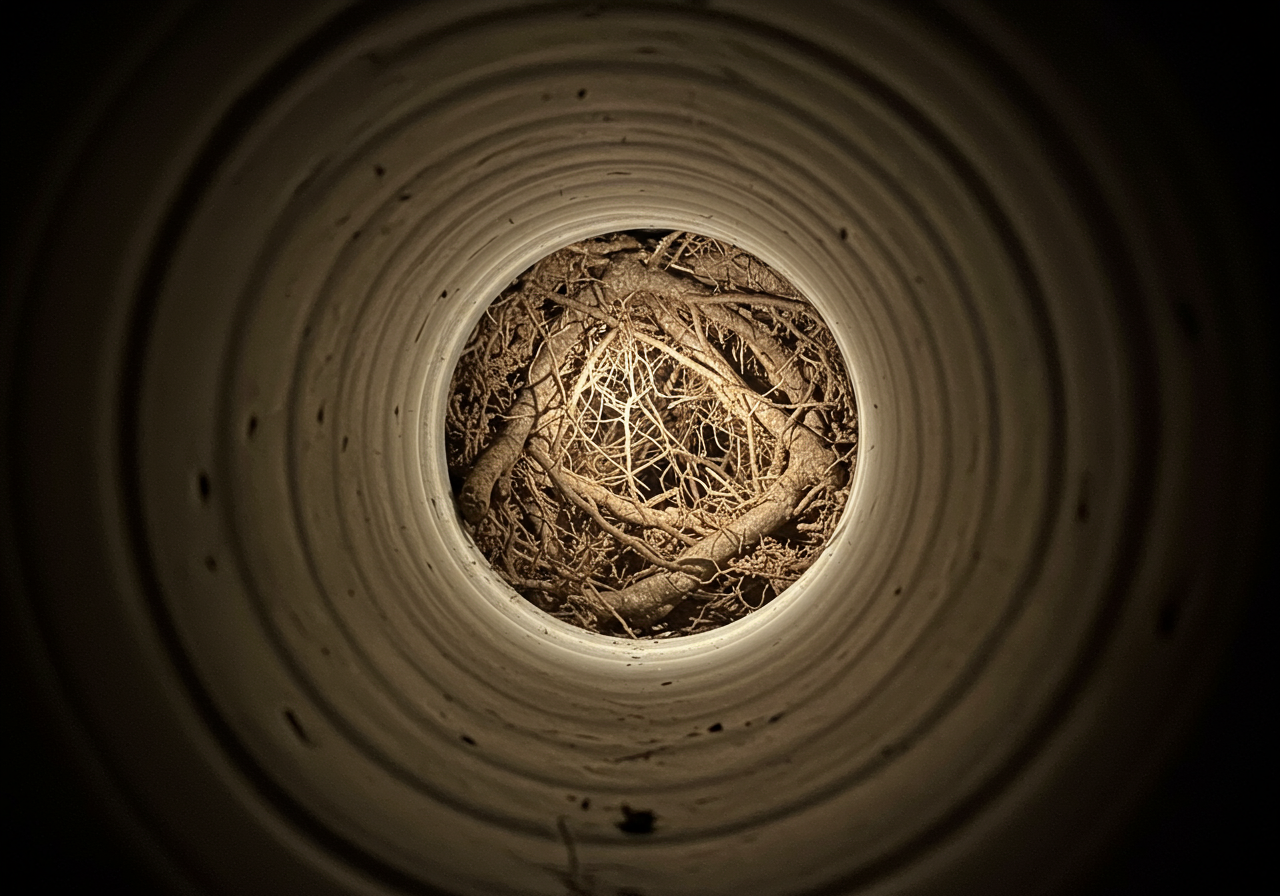Maintaining the health of your sewer line is crucial for preventing costly and inconvenient issues down the line. Here, we'll explore some key strategies to keep your sewer line in optimal condition.
Before delving into maintenance tips, it's essential to recognize common sewer pipe conditions that can affect your system:
- Low Areas (Sags or Bellies)
- Buildup
- Tree Roots
These conditions can be identified using advanced camera systems during a video pipeline inspection.
Condition #1 – Low Areas (Sags or Bellies)

Example of a low area in line
Low areas in sewer lines, known as sags or bellies, can impede the flow of debris and water, potentially leading to blockages and backups. It's important to note that a sewer line can have multiple low areas.
These low areas can generally be classified as:
- Functioning well, requiring no immediate action but benefiting from regular maintenance.
- Functioning properly, not in need of repair but warranting occasional maintenance and habit adjustments.
- Functioning adequately, not requiring repair but benefiting from regular maintenance and habit modifications.
- Functioning poorly or inadequately, requiring repair through excavation to correct slope issues. A re-scope is recommended after repair to ensure proper slope alignment.
Condition #2 – Buildup

Example of buildup in sewer line
Buildup occurs when certain food waste materials adhere to the pipe wall and harden, often observed in cast iron pipes. Substances like fats, oils, and grease (FOG) are major contributors to this condition. As buildup thickens, it restricts the pipe's passageway.
Condition #3 – Tree Roots

Example of tree roots in sewer line
Tree roots can infiltrate sewer pipes at the joints of clay and concrete pipes, as these connections are typically not completely sealed like PVC pipes. The presence of tree roots in cast iron pipes may indicate pipe deterioration.
It's a common misconception to assume that when tree roots are present:
- The pipe is broken and requires immediate repair.
- The pipe is leaking and needs urgent attention.
In reality, as tree roots gradually grow between pipe joints, they can act as a barrier without causing leakage. Depending on the severity of root intrusion, it's advisable to have the pipe cleaned by a
reputable drain cleaning company using a 3" to 4" blade. After cleaning, re-scoping is recommended to assess the condition before considering repairs.
Tips for Effective Sewer Line Maintenance:
Here are seven practical tips to maintain your sewer line and keep it free from issues:
1. Minimize Food Waste in Drains
To prevent buildup and issues related to low areas and excessive roots, adopt the habit of limiting food waste down the kitchen drain. Scraping food waste into a garbage container and avoiding items like fats, oils, grease, stringy foods, eggshells, and coffee grounds can significantly reduce the risk of clogs.
2. Dispose of Non-Food Items Properly
Small non-food items such as dental floss, rubber bands, and wipes should never be flushed down toilets or drains. These items can accumulate and contribute to blockages over time.
3. Opt for One-Ply Toilet Paper
Using one-ply toilet paper or opting for two-ply brands labeled as "septic and sewer safe" can aid in preventing clogs caused by low areas and existing roots in the sewer line.
4. Flush the Plumbing System Regularly
Flushing the plumbing system once a month by filling water-holding devices in the home and draining them simultaneously can help maintain proper flow and prevent issues in the mainline sewer.
5. Adjust Toilet Flush Volume
If low areas are identified in your sewer line, consider setting toilets to high volume flush to ensure adequate waste removal. This is particularly important in older systems or areas with construction-related slope issues.
6. Address Tree Roots
If tree roots are a recurring issue, enlist the help of a professional drain cleaner to mechanically clean the line annually. Additionally, when planning landscaping projects, choose tree species with less invasive root systems to minimize future issues.
7. Use Natural Drain Cleaners
Instead of harsh chemical cleaners, opt for natural alternatives like a bio-clean ultimate drain cleaning kit. This eco-friendly blend of bacteria and enzymes effectively breaks down organic waste without harming your plumbing system or the environment.
By implementing these maintenance tips, you can prolong the life of your sewer line and minimize the risk of costly repairs or backups. Remember to prioritize regular inspections and proactive measures to ensure the continued functionality of your sewer system.




